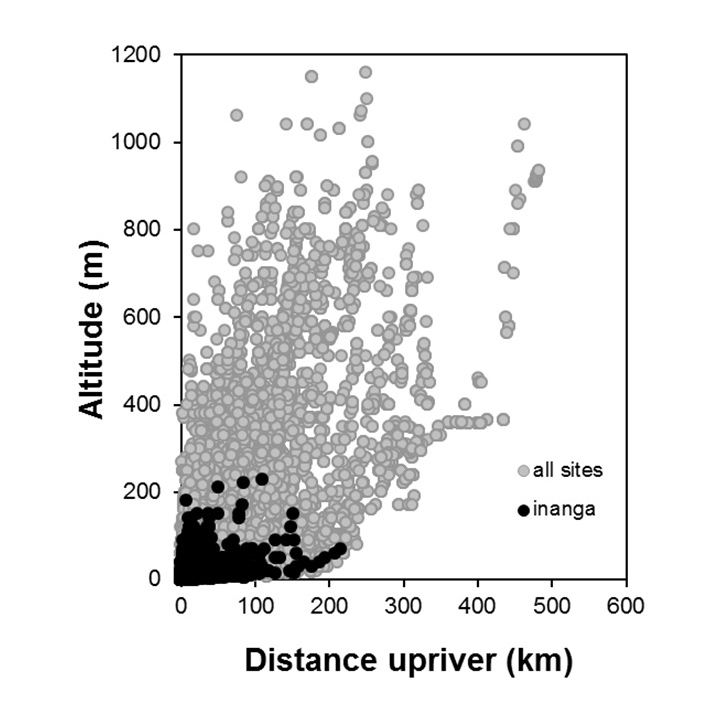Inanga
Galaxias maculatus (Jenyns, 1842)

Every New Zealander knows what whitebait are, and most have probably eaten a fritter or two in their time. What many people don't realize is that five separate galaxiid species make up the whitebait catch - inanga, banded kokopu, koaro, shortjaw kokopu, and giant kokopu. In most river systems, the inanga makes up the majority of the whitebait catch, and thus this fish is probably encountered more often than other members of the Galaxiidae family.
Adult inanga are the smallest of the five whitebait species, rarely exceeding 110 mm in length. Their silvery belly and somewhat forked tail make them easy to distinguish from the other galaxiids except for their close relative the dwarf inanga, a species restricted to some dune lakes near Dargaville. Smelt frequent similar habitat to inanga and can be confused with them. However, smelt have scales and an adipose fin, features that are easy to see on close examination.
Inanga inhabit open rivers, streams, lakes, and swamps near the coast and can often be seen shoaling in open water. They are very poor climbers, however, and do not penetrate any distance inland unless the river gradient is very gradual. Inanga are one of the most widespread galaxiids. They occur right around New Zealand and its offshore islands, as well as in South America and Australia.
Over the years, much has been said about the decline of the whitebait fishery and possible reasons for it. Fishing pressure was the target of a recent study on the Mokau River, which used dye-stained whitebait to determine the number of fish that escaped past anglers' nets. This showed that whitebaiters caught a relatively small proportion of the run. However, a parallel study showed that only about 20% of the whitebait that escaped survived to reach adulthood. Historically, their abundance has been greatly reduced nationwide by swamp and wetland drainage. Introduced fish (trout, gambusia) are also thought to have reduced inanga. But today, a reduction is spawning habitat is believed to be the major limiting factor. Inanga spawn on river/stream banks among vegetation inundated by spring high tides. The eggs remain above the water level until the next spring tide when they hatch and are washed out to sea. Modification of the tidally affected regions of stream and river banks by cattle browsing and flood control works have no doubt destroyed much spawning habitat. Because they cannot climb small falls, inanga are restricted to the lower reaches of rivers and stream and their access to good habitat can be greatly reduced by poorly designed culverts.
Inanga PDF Download [PDF 311KB]

![Inanga distribution map [2024]](/sites/default/files/styles/wide/public/2024-02/Inanga.jpeg?itok=r2WInHN7)

